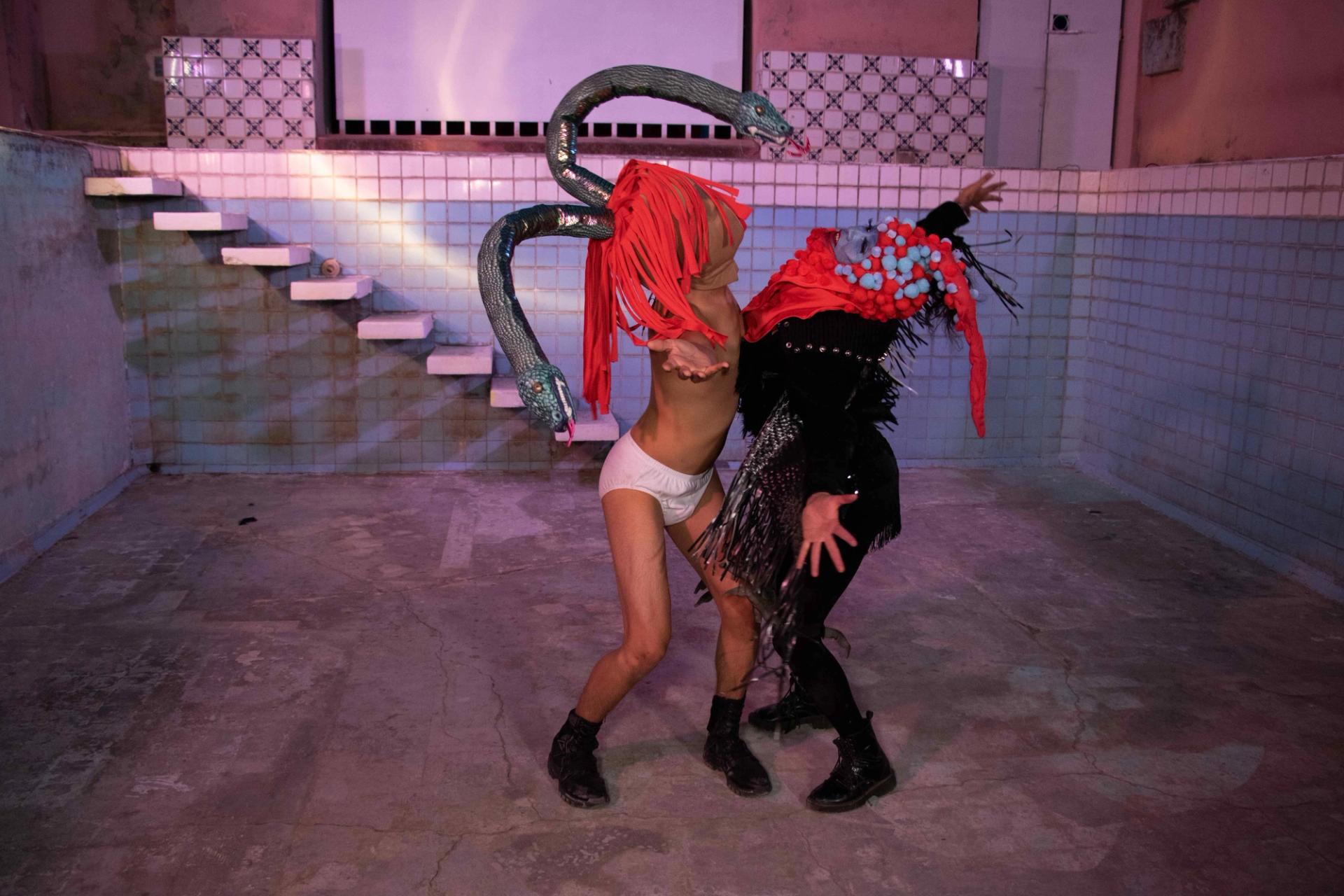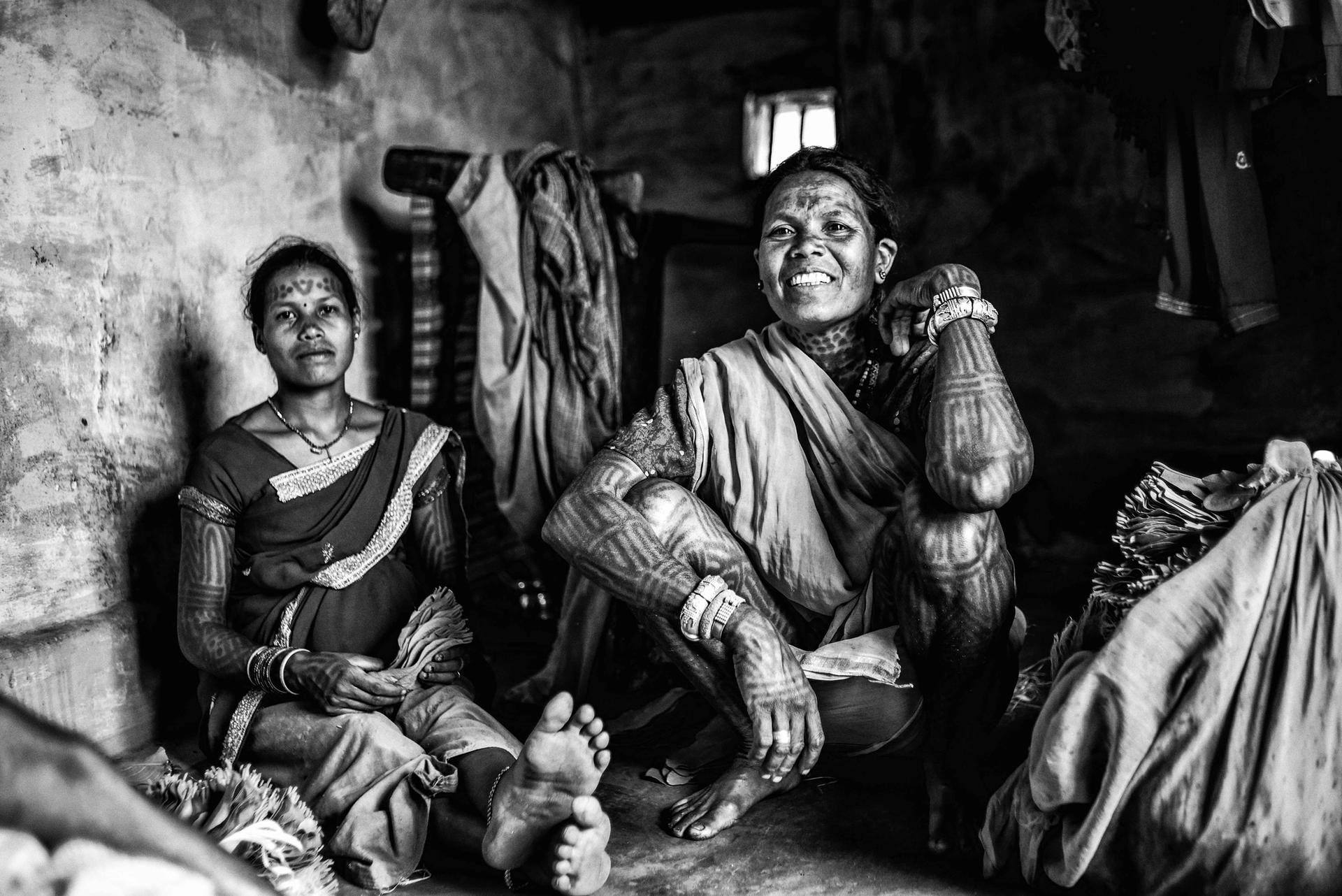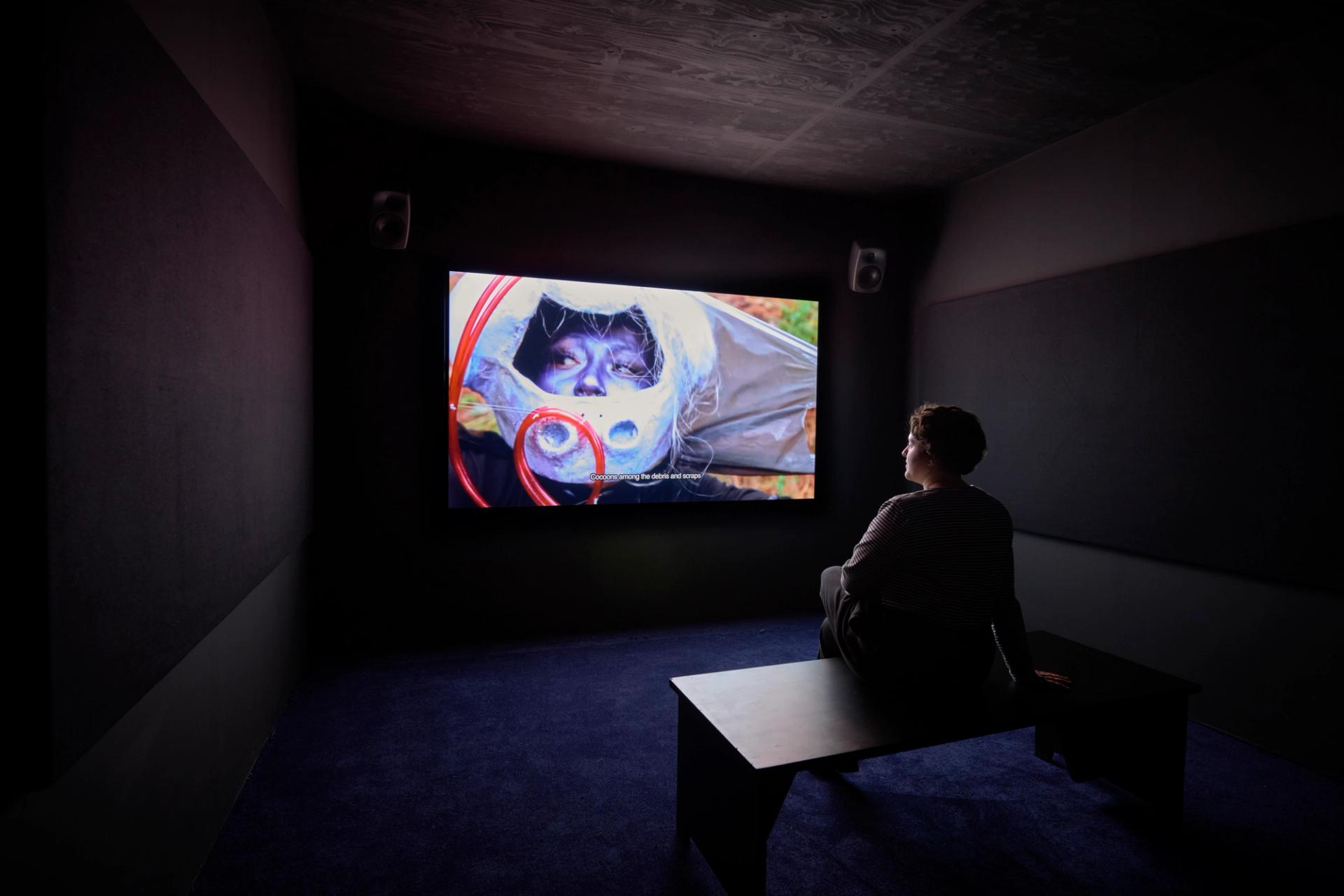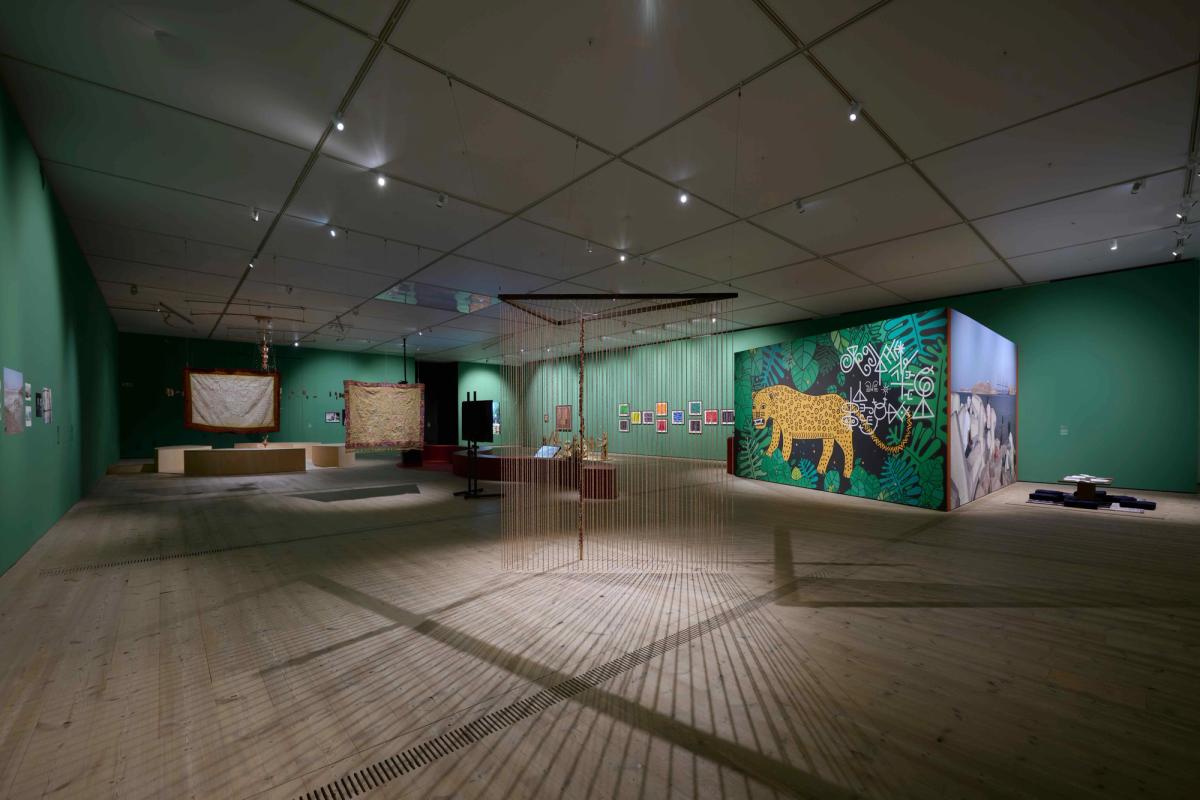Environmentally themed shows keep coming thick and fast at museums and galleries worldwide, but some stand out as especially significant. Stepping Softly on the Earth at Baltic in Gateshead (until 14 April) not only encourages new thinking among visitors but also marks a profound institutional shift in how exhibitions can be conceived, presented and perceived. The show brings together work by more than 20 mostly non-Western and indigenous artists from countries including Brazil, Bangladesh, Australia and Iran, all of whom, in radically different ways, challenge our human-centred perspective. Instead, this show, which takes its title from a quote from Chief Seattle (the leader of the Suquamish and Duwamish Native American tribes from 1808 until 1866) takes the view that all things and beings are interconnected, with no distinction between body and mind or the human and the natural world.
“There are indigenous cultures in which there aren't different words for nature and culture,” says the exhibition’s curator Irene Aristizabal. “The land, the person, the nature around it, they are not separated… this exhibition approaches the world as a “pluriverse”, where many worlds exist. They don’t try and cancel each other, they support each other. It’s a unity or a web of interconnectedness.”
This message of a fluid, integrated world extends throughout the show. It is present within the earth pigment paintings of Queenie McKenzie Nakara, which she used as a tool when negotiating protection for sacred women’s sites at the Argyll diamond mine in Kimberly, Western Australia, and to teach new generations about centuries-old traditions. It is also apparent within Mexican Naomi Rincon Gallardo’s carnivalesque new film Eclipse (2023), which she describes as a “bastardised version” of Mesoamerican cosmologies, complete with a cast of vengeful updated deities.
These deities are shaped by queer resistance and offer rambunctious
opposition to centuries of colonial displacement and environmental degradation.

Naomi Rincon Gallardo’s film Eclipse (2023) reimagines characters from Mesoamerican cosmologies
Photo: Claudia López Terroso
Other invitations to reconsider how we relate to our surroundings include Shatabdi Chakrabarti‘s photographs, which were made with and depict the women of the Baiga tribe of Madhya Pradesh. These women physically embed the land and its creatures into their bodies in the form of talismanic tattoos made from burnt snakeskin and charcoal. Elsewhere, jute figures made by the Gidree Bawlee Foundation of Arts in Bangladesh act out and reinterpret rural folk tales which connect current communities with ancestral stories and knowledge.

Shatabdi Chakrabarti‘s photographs depict the women of the Baiga tribe of Madhya Pradesh, whose talismanic tattoos depict features of the local landscape and its wildlife
Courtesy of the artist
Some works point to where fragile balances have been tipped and where pluriverses need urgently to be reinstated and nurtured. The Iranian photographer Solmaz Daryani chronicles the way Lake Urmia in Iran has rapidly shrunk into a salty dustbowl, while art research duo Tizintizwa's film portrays the seasonal apple harvest that takes place in the Atlas Mountains, contrasting the richness of the agricultural labourer’s songs with the monotony of the region’s ever-expanding monoculture. The loss of eco-diversity is a theme picked up in Aline Baiana’s delicate, suspended sculpture. In this work, a dangling column of various beans and seeds indigenous to Brazil is surrounded and partially obscured by a uniform curtain of soybeans, which now form one of the country’s main exports whilst at the same time devastating its soil quality and ecosystems.
The theme of interconnectedness permeates the show's conception and installation, too. The exhibition was made possible by a British Council collaborative research grant which enabled Baltic to partner with the Institute of International Visual Arts in London, CAPC Museum of Contemporary Art Museum in Bordeaux, La Escocesa in Barcelona, Mas Arte Más Acción in Bogotá and Pivô in São Paulo. Each of these organisations then in turn drew on all their contacts to pool information and propose Indigenous groups and artists, many of whom are how having their first UK showing.

Aline Baiana’s delicate, suspended sculpture contrasts a column of various beans indigenous to Brazil with strings of identical soybeans, offering a commentary on a growing monoculture
Photo: © Maarten Nauw / Framer Framed
Within the building itself, plinths and stud walls have been discarded in favour of a calm, dimly lit open plan space, painted deep green and with a snaking red bench running down its centre. This bench offers a vantage point for viewing several film and wall based works.
The meditative atmosphere is further enhanced by the gentle dripping and low rumbles of Colombian artist Leonel Vasquez’s Water Temple, River Tyne (2023). This is a specially commissioned sculptural-architectural sound piece that uses purified water taken from the nearby River Tyne as well as rocks gathered from the local landscape, all of which will be returned to their original locations when the exhibition comes down.
In Vasquez’ hybrid work—— shaped like a chandelier with a central pool below—these rocky lumps of geological deep time are “played” almost like ancient gramophone records, and their sounds then send vibrations from within the raised circular pale wood benches that surround the structure. Visitors that sit—or lie—on these benches can feel this work reverberating throughout their bodies, while also experiencing the restorative sight and sound of water which, as we often forget, also makes up more than half of our physical selves.
In the rest of the quote from which this exhibition takes its title, Chief Seattle presciently observes that we all have to take responsibility for our planet. “Our marks are getting deeper and deeper,” he declared more than 200 years ago. “And every move one of us makes, we all make. Gone is the idea that each of us leaves our individual footprints in the world; when I step on the ground, it is not my footprint that remains, it is ours. And it’s the trail of a disorientated humanity, treading deep.”
Right now humanity appears to be even more discombobulated and there’s no doubt as to the devastating depth of our collective footprint. So for Chief Seattle’s words to have any true currency this show must itself step softly on the earth, and it is in its concerted effort to practice what it preaches that the Baltic show is also particularly noteworthy.
Below are a few key examples from Baltic’s detailed breakdown of the environmental measures put in place to ensure that Stepping Softly on the Earth lives up to its name.
Practical measures
Although the show is global in participants and scope, where possible every attempt was made to prioritise local suppliers in sourcing building materials and contractors. This includes decisions made regarding the onsite construction of Vasquez’s work and the commitment to returning its rocky components to their original locations.
All wood in the exhibition is to be reused or recycled, while the carpet in the projection rooms has now been used twice and will continue its life after the show. All AV equipment belongs to Baltic so is repeatedly reused and the show’s two large wall pieces were deliberately made from greener wall paper rather than vinyl.
All design and artist communication was done remotely, and only three of its 21 artists were invited to install on site. If any artists already had works in the UK or Europe these were selected in order to avoid air or sea freight, and in cases of artists from geographically distant locations where no works were stored nearer, to save on transportation the curators tried to select films rather than physical works. In the few instances where international shipping was absolutely necessary, consolidated transport and companies with the best ethical and environmental policies were selected.

In cases where artists did not have physical work stored in the UK or mainland Europe, curators tried to select their films
Photo: John McKenzie @ Baltic Centre for Contemporary Art
All of the above and more are part of Baltic’s sustainability policy, which is currently being revised and updated and will be available to view in full on its website from 1 March. Whatever the theme of the institution's exhibitions and events, environmental measures will continue to be implemented, extended and rolled out across Baltic’s entire programme and all of its related operations.
Stepping Softly on the Earth also chimes with the Baltic’s other main exhibition, Michael Rakowicz’s The Waiting Gardens of the North, currently on show until 26 May. This giant growing, evolving garden installation celebrates the nutritional, therapeutic, cultural and medicinal power of plants through a dramatic (and locally constructed) recreation of the Assyrian gardens, which were illustrated on a 668-631 BCE relief panel from modern day Mosel. The gardens are believed to be the precursor to the Hanging Gardens of Babylon.
Rakowitz has also recreated the panel itself out of locally sourced food packaging.
In programming such exhibitions and in announcing such practical actions, Baltic are setting an important example for our sector. Stepping Softly on the Earth epitomises in name what we so far have signally failed to do, and if our poor denuded, degraded planet is to have any chance of survival, our footfalls, both individual and institutional, have to lighten up—and fast.
- Stepping Softly on the Earth, Baltic Centre for Contemporary Art, Gateshead, until 14 April




